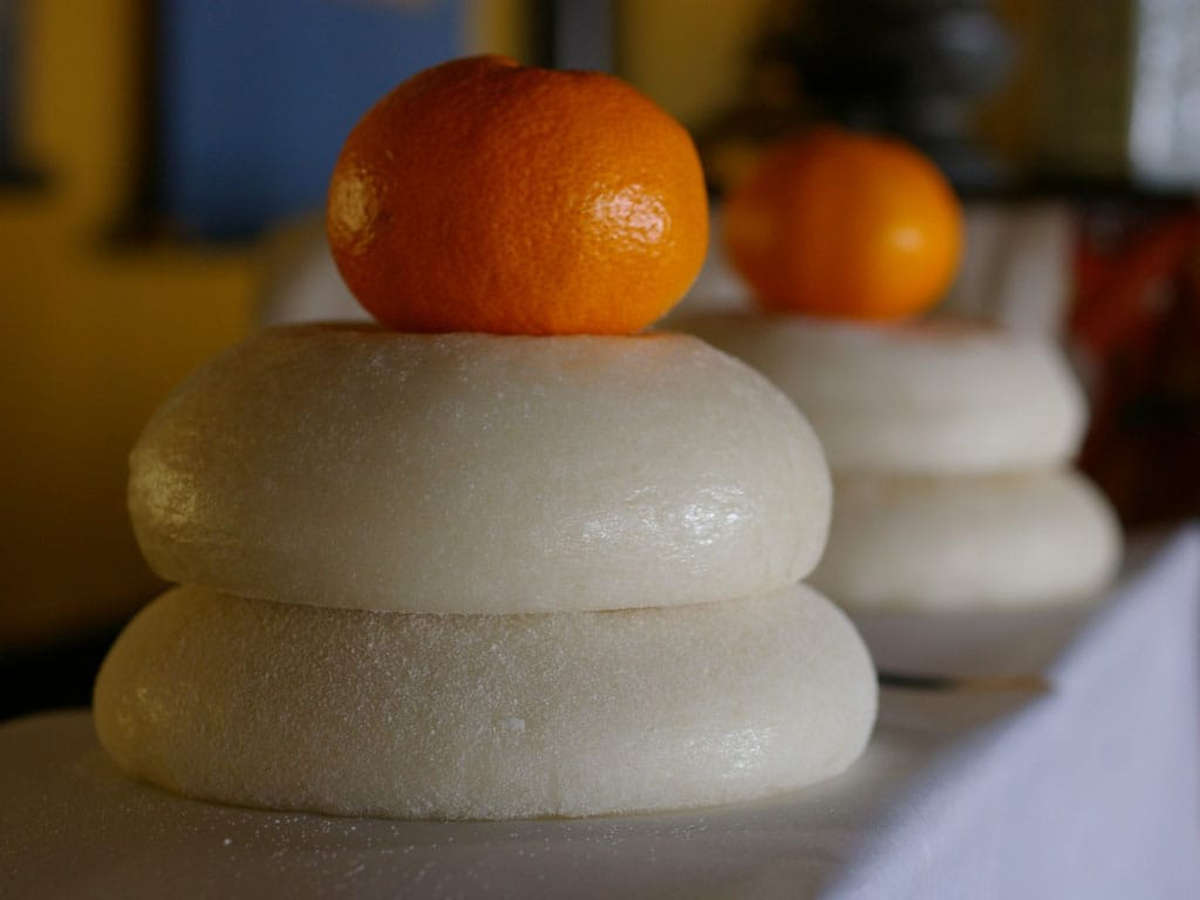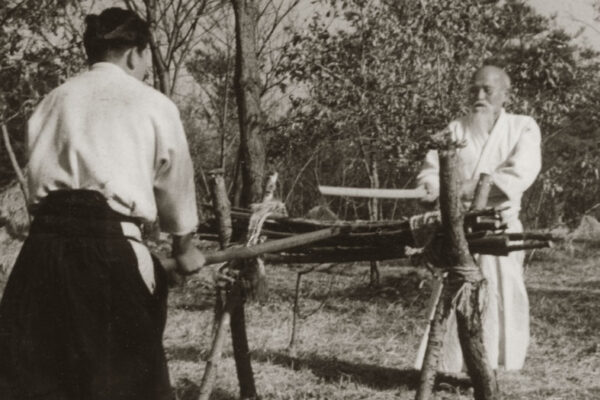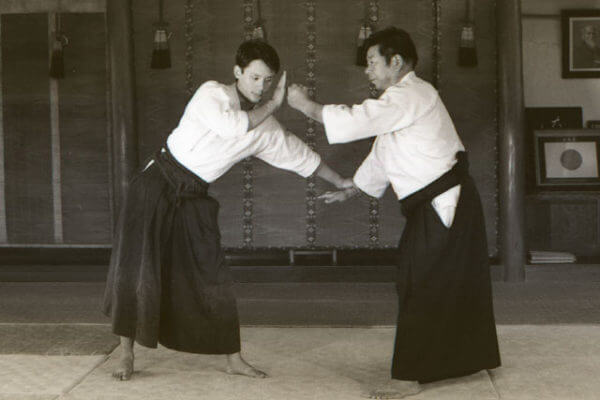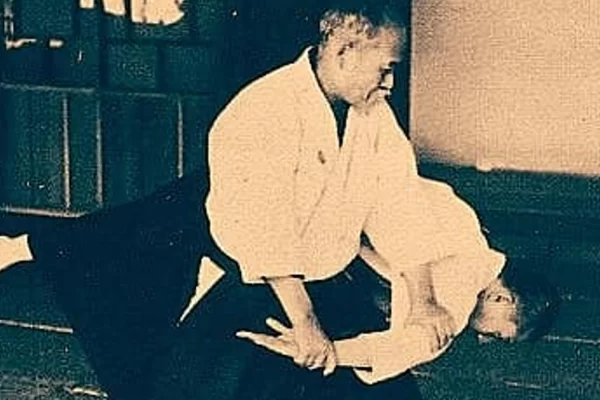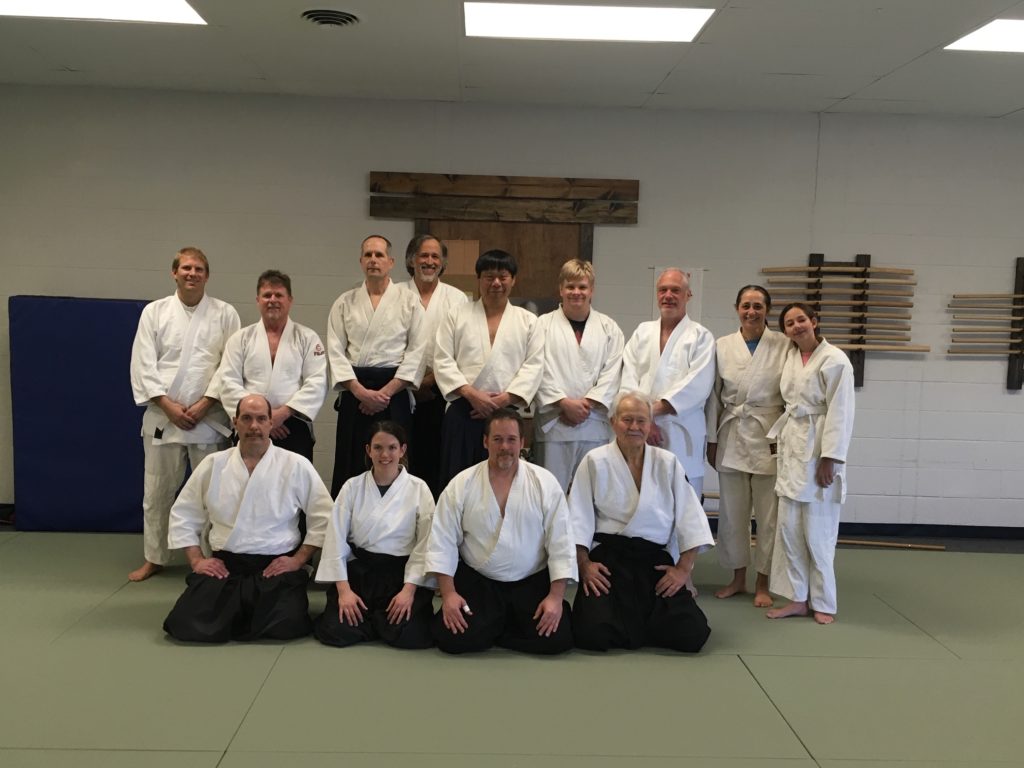
We held our 2nd Annual Kagami Biraki on January 11th, 2020 this year. Carrying on the tradition of our parent dojos, and the greater Aikido community, we hold a Kagami Biraki celebration annually. Kagami Biraki is a time of introspection and re-dedication. This is a great time to remind ourselves why we practice Aikido, and to renew our personal commitment to practice hard during the coming year!
We were joined this year by visitors from Pikes Peak Aikido. We kicked off Kagami Biraki with a quick introduction to the celebration. I spoke for a few minutes on the history and meaning of Kagami Biraki. We also reminisced a bit about major dojo events over the last year, including the seminar with Doshu in San Mateo. Our dojo also celebrated that we grew to seven full time students in 2019. Keiko, this year, was dedicated to the memory of both Hitoshi Izuka Sensei (Akita Aiki Shuren Dojo) and Steven Shaw Sensei (Aikido Tanshinjuku).
Practice focused on Bukiwaza (weapons). We worked on the first 13 Jo Suburi and then practiced the first three Ken-Tai-Jo. I demonstrated some older versions of the Ken-Tai-Jo, as well. Everyone seemed to enjoy the class!
After class, we had a short ceremony where we broke the Kagami Mochi, and toasted with sake. Then we had a small pot luck and enjoyed more sake! I made a bit vat of Zenzai again this year. I tried a different method of making the “mochi balls” this year, and unfortunately, they melted into the soup. The flavor wasn’t bad, but the consistency wasn’t quite right. Still… It was satisfying after two hours of keiko.
We deeply appreciate that our visitors from Pikes Peak Aikido were able to make it! It was nice to have a mostly full mat, and the event was a lot of fun!
Next year, we’ll likely extend the schedule by an hour and incorporate some demos! Everyone have a safe and amazing 2020. Gambatte!
Form in Aikido
Over the years I’ve heard the statement made that Aikido is “without form”. I believe that this is a result of both misinterpretation of O-Sensei’s views and misunderstanding of Aikido pedagogy. My views are distinctly influenced by my Iwama Style background, but I think O-Sensei left quite a bit of evidence behind indicating that while HIS Aikido was without form, the path to getting to “Aikido without form” is not devoid of intense focus on form.
Zanshin (Remaining Mind) – Cultivating a Budo Mindset (Part 2)
This is the first installment in a five post series discussing the role of “mindset” in serious Budo training. This post discusses “Zanshin”, or “Remaining Mind”.
Continue Reading Zanshin (Remaining Mind) – Cultivating a Budo Mindset (Part 2)
Shoshin (Beginner’s Mind) – Cultivating a Budo Mindset (Part 1)
This is the first installment in a five post series discussing the role of “mindset” in serious Budo training. This post discusses “Shoshin”, or “Beginner’s Mind”.
Continue Reading Shoshin (Beginner’s Mind) – Cultivating a Budo Mindset (Part 1)
